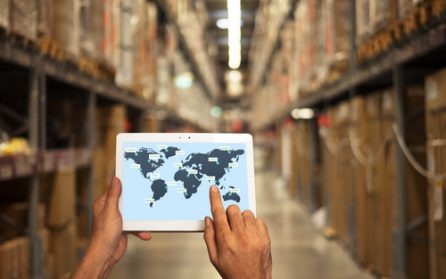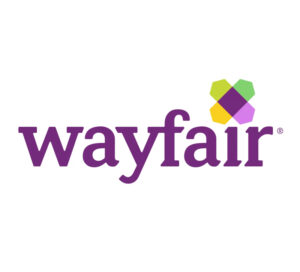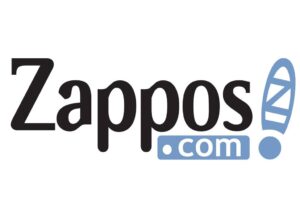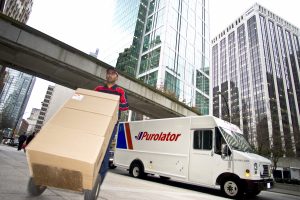Blog
Direct Ship Vendor Solutions Mean Faster eCommerce Deliveries, Improved Efficiency

When online home furnishings retailer Wayfair first launched its site back in 2002, it was far from the inventory-rich, efficiency-focused operation consumers know today. Operating then under the name CSN Stores, co-founder Steve Conine describes a mishmash of 200 disparate eCommerce sites with no coordination between them, and no visibility into inventory or fulfillment processes.
“We used to throw things up on the site,” Conine said in an interview with Forbes magazine. “If you bought it from us, we’d then have to find out whether we had it.” Not surprisingly, this chaotic setup produced less than stellar results, with a high rate of incomplete orders and “lots of complaints about late shipments.”
Flash forward to 2019 and the company, now called Wayfair, has more than 11,000 suppliers and offers more than 14 million products across five websites. To manage the complicated logistics of ensuring fast deliveries to its customers, the retailer relies on a “drop ship” model, in which vendors maintain ownership of inventory and oversee fulfillment to Wayfair’s customers. According to Digitalcommerce360, the dropship model allows the retailer to offer its vast assortment of SKUs. “When a shopper clicks to view ‘coat racks,’ for instance, she can wade through 7,284 results that range from an $11.99 Richelieu classic brass wall hook to a $1,943.28 Axor freestanding coat rack.”
Online home furnishings company Wayfair.com was an early adopter of vendor-managed fulfillment solutions.
Or, as Spark Capital analyst Alex Finkelstein commented to the Boston Globe, “You can’t stock 500 different couches in 75 different colors in a warehouse.”
Clearly, the Wayfair example highlights the tremendous benefit a drop-ship strategy can have in helping an eCommerce retailer manage its inventory and ensure on-time deliveries to customers. While this model has actually been around for many years, it has taken on new importance with the surge in eCommerce sales. The dropship model has also served as the basis for hybrid solutions that retailers have adapted to fit their specific needs. The “direct ship vendor” (DSV) model, for example, recognizes that some SKUs can be better managed via an internal fulfillment process but that other products would benefit from a direct-to-customer strategy. For example, retailers such as Walmart or Target might find greater efficiency sourcing smaller products internally while relying on manufacturers or suppliers for direct shipment of larger products such as furniture or tires.
Despite the demonstrated benefits of the dropship and DSV models, they are not appropriate for every retailer, and unless painstaking care is taken to get the logistics right, the concept can have disastrous consequences. Among other possibilities, the retailer — and not the supplier — will get the customer complaints about a vendor that habitually misses shipping deadlines or for packages that arrive in shoddy packaging.
But in the right circumstance, and with the right logistics partner, the DSV model can be a highly efficient strategy. The benefits can be especially apparent for online retailers that ship regularly to the Canadian market since shipments arrive directly from the supplier, thereby streamlining the process and potentially avoiding a stop at a retailer’s Canadian distribution center.
The following discussion will provide an in-depth overview of the pros and cons of using a direct ship vendor solution. The discussion will also highlight the importance of enlisting an experienced logistics partner to manage your DSV solution. Not every logistics provider has the required capabilities, so it is essential to understand all aspects of the DSV model before making any commitments or signing any contracts for logistics services.
What Is a Direct Ship Vendor Solution?
A direct ship vendor solution refers to a situation in which an eCommerce retailer does not actually maintain inventory of products sold on its site but instead relies on manufacturers and suppliers to directly fulfill customer orders. When a customer places an order for a particular product — from the retailer’s website — the order is immediately transmitted to an appropriate vendor for processing and fulfillment.
Depending on the arrangement the retailer has worked out with the vendor, packages may bear the retailer’s name and logo, and deliveries must arrive within the time frame indicated on the retailer’s website.
The DSV model is similar to drop shipping in that both strategies allow retailers to avoid having to own or store inventory, or become involved in the fulfillment process. A critical distinction is that in a DSV solution, a retailer enlists the services of a logistics provider to manage participating vendors. From ensuring integration of technology systems, managing fulfillment operations, to developing shipping strategies, a retailer’s logistics provider is a key player in any DSV solution.
Direct Shipping Historical Overview
According to The New York Times, the concept of direct-to-consumer fulfillment dates back to 1872 and the initial publication of what came to be the Montgomery Ward mail-order catalogue. That iconic publication began as a one-page catalog list compiled by traveling dry goods salesman Aaron Montgomery Ward. Ward was interested in finding a way to provide “city” materials to rural residents at a reasonable cost. His pioneering model allowed customers to pick up their mail-order purchases at their local train station, thereby eliminating “middlemen” such as local shopkeepers and traveling salesmen.

Ward’s idea served as the basis for what became a thriving mail-order catalogue industry, founded on the basis of direct-to-customer fulfillment. While Montgomery Ward went on to open a network of physical stores, it laid the groundwork for today’s drop shipping model — direct shipment of products to consumers.
That model proved to have staying power, as the advent of the internet brought the ability for businesses to sell products online without actually owning — or possessing — the items being sold. Richard Jones, co-founder of technology solutions provider CommerceHub, cites ValueAmerica and Pets.com as two examples of the “purely digital” retailers that appeared in the early days of eCommerce. “They would focus on branding, merchandising, and customer support,” Jones explained. “They would rely on dropship distributors to fulfill products at wholesale.”
Another early experimenter in the concept of digital stores, of course, was Jeff Bezos, who had launched an online bookstore called Amazon that relied on Seattle wholesalers and distributors to ship CDs and books directly to its customers.
Although Amazon today has built a significant network of its own distribution centers and warehouses, its Amazon Marketplace, which accounts for more than one-half of total sales, is modeled on the classic drop ship model of suppliers shipping directly to customers.
Direct Shipping in Today’s Retail Environment
Although firm statistics are hard to come by, industry-watchers tend to agree that direct-to-consumer shipping accounts for between 25–33 percent of all U.S. eCommerce transactions.
A recent convert has been Macy’s, which implemented a “Vendor Direct” program in 2018 that relies on vendors for direct fulfillment of customers’ online orders. According to DigiDay, the program allows the retailer to “add and modify product selection based on what it knows about customers.” Within the first six months of launching the program, Macy’s doubled the number of products offered on its website.
Further, the company’s August 2019 earnings presentation noted that Vendor Direct SKUs accounted for approximately 10 percent of total online sales. The retailer anticipates adding more than one million new SKUs, along with an additional 1,000 new vendors. “Vendor Direct has only upside,” the company presentation noted. “It adds sales and profit, and increases customer satisfaction and traffic to the site.”
As the Macy’s example makes clear, direct-to-consumer fulfillment models can offer significant benefits, which include:
- Reduced inventory and warehouse costs. Since the vendor maintains ownership of products, a retailer can significantly reduce inventory and associated warehousing costs. Not having to invest in inventory can help a retailer address what has traditionally been one of the biggest pain points — excess inventory that has to be sold at extremely discounted prices.
- Ability to increase SKU listings. The DSV model allows retailers to expand website product offerings without having to maintain inventory. The retailer can add items simply by listing them on its website and linking to the appropriate vendor. As noted previously, Macy’s plans to use its Vendor Direct program to increase product offerings by an additional one million SKUs.
- Greater control over product listings. In addition to easily adding SKUs, a retailer will have the flexibility to quickly remove slow-moving items that fail to gain traction with consumers. Since the retailer presumably holds no inventory for these items, there is no financial loss or risk of being left with quantities of unsold merchandise.
- Faster deliveries to consumers. The direct ship model removes the retailer from the distribution process, which streamlines the delivery cycle. Products move directly from the vendor/supplier to their end destination, which usually eliminates a stopover at a retailer’s distribution center. This accelerates the fulfillment process, which can be especially beneficial for eCommerce shipments headed to Canada. U.S. online retailers that ship to Canada have the added challenge of satisfying consumers’ delivery expectations despite having to cross an international border and navigate a challenging Canadian distribution network.
- Increased foot traffic to physical stores. A DSV solution can offer customers the option of picking up their shipments at a retailer’s physical store. Research by JDA Software found 50 percent of survey respondents had used a “buy online, pickup in-store (BOPIS)” option in the last 12 months, and 40 percent of those individuals made additional purchases while they were in the store.
- Facilitated handling for large, agile products. Retailers that offer products that may be large and/or heavy can avoid having to involve themselves in the extra care required to store and ship such products. This is also true for retailers that offer computer equipment or products that are fragile or require special handling, such as temperature-controlled storage or extra security.
- Retailer is removed from the fulfillment process. By allowing a vendor to ship products directly, a retailer can eliminate the added costs and responsibility for managing the fulfillment process. Instead, the process is shifted to the product’s vendor, with careful management by a qualified logistics provider.
How Does a Direct Ship Vendor Solution Work?
A direct ship vendor solution, in which a retailer owns some of its inventory, is essentially a hybrid of a traditional “drop ship” model, in which the retailer holds no inventory. In a DSV solution, a retailer only off-loads fulfillment for certain products and vendors.
A “typical” DSV solution would normally follow a fairly straightforward process that includes the following steps:
- Retailer identifies products to list on its website.
- Logistics provider reviews that product listing and determines SKUs and vendors that would benefit from a DSV solution. This includes a careful analysis of each vendor’s volume, along with product characteristics to determine whether or not a DSV solution would be cost-efficient.
- Logistics provider works with each vendor/ supplier to integrate technology systems, create fulfillment infrastructure, and identify optimal shipping strategy.
- Consumer places order.
- Order is immediately transmitted to vendor for fulfillment.
- Logistics provider picks up consumer’s shipment and ensures on-time delivery.
Under the draft United States-Mexico-Canada Agreement (USMCA), which, if approved, would replace USMCA, Canada has agreed to two de minimis-related actions specific to online purchases:
- Logistics provider will ensure full compliance with all Canada Border Services Agency (CBSA) documentation requirements. All documents will be pre-filed in advance of the shipment’s arrival at the border.
- Once in Canada, logistics provider will ensure seamless integration into a Canadian distribution network and final delivery to Canadian end destination.
It’s easy to see then, while the concept of “direct delivery” would seem to be very straightforward, advance planning and logistics capabilities are integral to successful execution.
DSV Is Not without Challenges — Special Considerations
While the direct-ship vendor model clearly offers significant benefits and opportunities for retailers, careful consideration must be given to all potential downsides.
A good example is the experience of online footwear retailer Zappos.com, which is consistently recognized for its extensive inventory and hassle-free return policy. According to D&B Hoovers, the company offers more than 3 million pairs of shoes from 7,000 “affiliate partners” through its website. When the company was founded in 1999, Chief Executive Officer Tony Hsieh relied on a drop-ship model. Workers would collect orders from customers and transfer them to suppliers. Such a model meant no need to purchase or store inventory, or become involved in the fulfillment process.
Online shoe retailer Zappos.com discontinued its vendor-fulfillment model.
“We didn’t carry any inventory,” Hsieh said in a 2010 interview with the Harvard Business Review. “Instead we relied on shoe manufacturers to ship products directly to our customers.”
However, as Hsieh points out, “that system never worked well. We didn’t have 100 percent accurate information about our vendors’ inventory, and because their warehouses were all over the country, delivery times weren’t predictable.” Zappos eventually stopped using the dropship model and today relies on its own warehousing and fulfillment processes. Hsieh says the decision to build an internal warehouse operation essentially saved the company. “Trusting that a third party would care about our customers as much as we did was one of our biggest mistakes.”
Retailers considering a DVS model can certainly learn from the Zappos experience. Allowing a supplier to interact with customers is one of many risks that must be evaluated and addressed. For Zappos, the need to maintain control over customer experience outweighed all benefits of a drop-ship solution. But each retailer will have to weigh the pros and cons of a vendor-managed solution and determine its best course. Important considerations include:
- Loss of control. Many retailers are reluctant to relinquish control over any aspect of their operations, especially processes that directly affect customer relationships. By transferring fulfillment to a third party, retailers lose the ability to control inventory along with fulfillment and shipping processes. As much as removing themselves from these processes can be beneficial, retailers must have confidence their suppliers will fulfill customer orders in a timely manner.
- Inventory allocation. Will the vendor be willing to reserve a certain volume of inventory for your customers, or does it operate on a first-come, first-served model? In some instances, unless a retailer can commit to a certain volume, a supplier may be reluctant to allocate stock. This in turn could result in a product being listed on a retailer’s website when, in fact, it is unavailable. This can be remedied either by:
- Real-time inventory tracking that will alert consumers when product level is low or when a product is out of stock.
- Reaching an agreement with the vendor for specific product allocations.
- Important to note, not even the retail giant Amazon is immune to the risk of inventory shortfalls. In its 2018 10-K filing with the Securities and Exchange Commission, the company cited “supplier relationships” as a risk factor. “We do not have long-term arrangements with most of our suppliers to guarantee availability of merchandise, content, components, services, particular payment terms, or the extension of credit limits. If our current suppliers were to stop selling or licensing merchandise, content, components, or services to us on acceptable terms, or delay delivery…, we may be unable to procure alternatives from other suppliers in a timely and efficient manner and on acceptable terms, or at all.”
- Customer experience. At a time when customer experience has emerged as a critical competitive differentiator, a retailer must ensure that any supplier entrusted to fulfill customer orders prioritizes customer service and the need to make good on promises to customers. For example, a retailer that encounters an unexpected glitch in meeting a delivery deadline might aggressively seek out alternatives, including elevating the delivery to express service. But would a supplier share that same sense of urgency?
- Need for real-time visibility. Retailers that enlist multiple vendors to fulfill different product offerings will essentially face the need for visibility into each vendor’s inventory. This will require integration with each vendor’s inventory system and the ability to post real-time updates to the retailer’s website should a product become temporarily unavailable.
- Consistency of service. A retailer works hard to develop its “brand,” so a customer can expect the same product selection, packaging, pricing, and customer service whether buying in-store or online. But once products leave the retailer’s chain of custody, there is a heightened risk for a breakdown in quality standards. Will vendor shipped packages bear the retailer’s logo, for example, or the vendor’s? Will a vendor be able to meet a retailer’s promise of delivery within a specified time frame, and what types of customer service will be offered? Many retailers publish “vendor fulfillment guides,” which set clear standards for performance. Walmart, for example, advises that “orders must be shipped in non-branded packaging and can’t include materials from any company other than Walmart.” Similarly, Best Buy directs that “vendor will package product(s) in a manner that prevents in-transit damage” and that “vendor will comply with all Best Buy branding standards,” with all inserts subject to written prior approval. While a fulfillment guide can certainly be an effective way to document a retailer’s preferences, it can be difficult to enforce those standards once the retailer is removed from the actual fulfillment process.
- Last-mile services. “Last-mile” service refers to the final stages of the delivery process and is regarded as the most critical part of the entire cycle. A customer can look at a tracking status and see that a package is “out for delivery” but still be disappointed should that package take several hours to finally appear. Additional concerns include packages left unprotected in inclement weather, packages that arrive in damaged cartons, and products in need of special services, such as installation, or that require an inside delivery, among many other considerations. Research by Honeywell determined that last-mile services account for more than 50 percent of total logistics costs, which drives home the importance of a seamless end delivery. Retailers are generally able to control last-mile deliveries by enlisting capable logistics providers that understand their priorities and will prioritize their delivery requirements. But once the retailer shifts fulfillment to the vendor, there is a risk for a deterioration in last-mile services. This is why a retailer needs to proactively ensure that a vendor’s logistics strategy prioritizes guaranteed, high-quality last-mile services. Clearly, a retailer must have eyes wide open in considering whether or not to outsource fulfillment to a vendor. As a retailer considers implementing a DSV model, it quickly becomes apparent that a key factor will be a top-notch logistics strategy. And that, of course, will depend on the choice of logistics partner.
Good Logistics Are Vital — Partner with Care!
A retailer interested in a direct ship model will need to enlist a logistics provider with the necessary experience, capabilities, and experience. As the retailer will soon learn, its logistics provider will be critical to building — and executing — a successful DSV model.
Therefore, a retailer must have full confidence in its choice of a logistics provider, which begins with a thorough review of a company’s capabilities before any agreements are signed. Key competencies to look for in a DSV logistics provider include:
- Comprehensive management/ coordination capabilities. A qualified logistics provider must be able to seamlessly manage shipments from multiple vendors located in multiple geographic locations. This includes the ability to work with each vendor to oversee a seamless onboarding, determine ideal shipping solutions, oversee fulfillment, provide meticulous record keeping, and ensure on-time customer deliveries.
- Flexibility. An experienced logistics provider must have ready access to the distribution network required for a complex DSV strategy. This includes access to extensive resources that can be easily tapped into and folded into a comprehensive strategy. In many instances, this means relying on a non-asset-based provider that does not own its own fleets or warehouses. Instead, a non-asset provider takes a “big picture” view of available options and identifies the best option for a particular customer. No asset providers are generally able to offer more flexible options than providers that are locked into using their own vehicles and routes.
- Broad geographic reach. Since a DSV solution will have many moving parts, it’s essential that a logistics provider is able to guarantee service to a retailer’s entire customer base, regardless of location. This means having a comprehensive distribution network throughout the United States and even coverage for international shipments (see below for an overview of Canadian distribution requirements). Logistics providers without access to a comprehensive network are often forced to transfer shipments mid-route to another provider. Not only does this add time to an already tight delivery schedule but it also increases the risk of damage and loss of visibility.
- Consolidation services. eCommerce shipments, which tend to be small in size and large in volume, are generally ideal beneficiaries of consolidation services. Through consolidation, smaller shipments are combined into one larger unit as a way to reduce freight costs and, if applicable, facilitate the international customs clearance process. As significant as consolidation can be, not every logistics provider has the necessary capabilities, so it’s important to determine if a company can provide this service before entering into an agreement.
- Technology-based. Technology is critically important to a DSV solution, so a logistics provider must have a high degree of IT capabilities and competence. Among the technology-based services to look for in a logistics partner:
- Ability to seamlessly integrate with vendor and retailer systems. This will ensure that customer orders are routed to the appropriate vendor and facilitate all aspects of the fulfillment process, including label generation, tracking, and reporting.
- Ability to route and manage customer orders that involve multiple vendors.
- Real-time updates that reflect inventory status across all vendors.
- Ability to provide real-time tracking capabilities to consumers.
- Comprehensive records management
- Scalability. Since many products are subject to demand peaks and valleys, it follows that retailers’ logistics needs will fluctuate. Make sure your logistics provider recognizes the need for a scalable solution that ensures full coverage during peak demand but will not penalize you during less busy periods.
- Innovation. The direct ship vendor model is a fairly new concept that was developed in response to the surge in eCommerce shipments. As eCommerce continues to evolve, so too must logistics capabilities. Therefore, a retailer must be sure to enlist a logistics partner that keeps pace with current technology and that actively works to identify new and better solutions. You want a partner that is invested in your success and understands that retailers that settle for the status quo will be left behind.
- Returns management. A DSV solution must also recognize the inevitable return of a significant volume of sales and the importance of having a customer-friendly process in place to ensure a fast, hassle-free process. Make sure your logistics provider has the capability to implement and manage a plan that facilitates the process for customers, but also allows retailers to easily add undamaged products back to inventory.
- Customer service. For a direct-to-customer model to work, your logistics provider must take seriously your commitment to your customers. A good logistics provider will have staff dedicated to your business who understand your objectives and who can advise how best to meet those goals. Equally important, that customer service representative must be easily accessible should something go awry or a last-minute change become necessary.
DSV: Added Efficiency for Canada-Bound Shipments
A July 2019 webinar sponsored by Canada Post revealed a few interesting statistics about the Canadian eCommerce market: first, that 80 percent of Canadians are online shoppers, and almost 70 percent of those shoppers have made purchases from U.S. retailers.
The discussion also highlighted the strength of Canada’s eCommerce market, with online sales projected to increase by a whopping 87 percent by 2022, over 2016 levels.
As the webinar leader summarized: “Canadians have money. They like to shop. And they plan to shop more.”
A growing number of U.S. online businesses have taken note and expanded eCommerce capabilities to the Canadian market. But operating within that market poses a unique set of challenges, including the need to ensure proper inventory supplies and fast fulfillment of customer orders.
This is why a direct-service vendor strategy might be the perfect solution for U.S. businesses that ship regularly to Canada. Consider the benefits:
- Reduced warehouse costs. Since a retailer will not have to maintain inventory for products offered by direct-source vendors, it can reduce Canadian warehouse costs along with associated labor and processing costs.
- Increased foot traffic to physical stores. A U.S. retailer with a physical presence in Canada can allow customers the option to pick up their shipments at a retail location. An estimated 30 percent of customers will prefer this option, which is likely to increase in-store sales.
- Ability to increase product offerings. The DSV model allows a retailer to expand website product offerings to Canadian customers without having to maintain inventory. The retailer can add items simply by listing them on its website and linking to the appropriate vendor.
- Faster transit times. By shipping directly from a vendor or supplier, a shipment can avoid a retailer’s internal network, which often involves a stopover at a distribution center. This is especially significant as retailers look for opportunities to accelerate deliveries to the Canadian market to meet consumer expectations.
As with a U.S.-based direct-to-consumer plan, logistics are critically important for success in the Canadian market. And when it comes to capabilities to execute a cross-border vendor solution, a retailer should consider Purolator International when choosing a logistics partner.
Purolator International — Extensive Capabilities for Canadian DSV Solutions
In almost all instances, a Purolator-managed DSV solution will allow Canadian consumers to receive their U.S.-based shipments faster than through a traditional retailer-fulfillment model. Key components of a Purolator-managed DSV solution include:
- U.S. vendors are identified that would benefit from a direct-to-consumer model. This may include vendors that sell hard-to-transport items that may be heavy or bulky, or vendors that sell an especially large volume of goods to a retailer’s customers.
- Once appropriate vendors are identified, Purolator works with each to develop an appropriate shipping schedule. Purolator ensures that all vendors meet the retailer’s requirements for packaging, labeling, and other shipment protocols.
- Each vendor’s shipments are picked up by Purolator, consolidated for efficiency, and transported directly to the border. In some instances, shipments arrive at the border on the same day they are picked up at their U.S. distribution center.
- Shipments arrive at the border with all documentation pre-filed and pass through customs with minimal delays.
- Shipments are then inducted into Purolator’s extensive Canadian distribution network. Once in Canada, shipments are broken down, sorted, and loaded for direct freight or parcel delivery.
- Shipments are delivered directly to the retailer’s customers, who may be located anywhere in Canada. Since all shipments are made via Purolator, a retailer can be assured that its high standards for quality, on-time deliveries will be maintained.
Purolator — Unmatched Capabilities for U.S. Retailers That Ship to Canada
Purolator leverages its extensive U.S. network with its comprehensive Canadian capabilities to provide seamless management of DSV solutions for Canada-bound shipments. No other U.S. logistics company can match this seamless access to the Canadian market.
- Direct service to the Canadian border. Because Purolator International is a non-asset-based company, it has the flexibility to build a logistics solution that best fits a customer’s specific needs. This highly customized approach has several important benefits:
- Shipments travel via line-haul direct to the border, with no additional pickups or distribution center stopovers.
- Courier and freight shipments are picked up at the same time, consolidated, and then travel on the same truck to the border.
- In some instances, a Purolator shipment will arrive at the border on the same day it is picked up.
- Consolidation efficiencies. Because of its non-asset status, Purolator International is able to offer significant — and important — consolidation services that include:
- Ability to pick up freight and courier shipments at the same time and move combined shipments to the border on the same truck. This can eliminate the requirement by some providers for separate freight and parcel pickups.
- Consolidated shipments can generally qualify for reduced freight rates.
- Consolidated shipments pass through customs as a single entry. This can help manage paperwork/filing requirements and significantly reduce customs processing fees.
- Seamless customs clearance. Prior to pickup, Purolator’s service experts ensure that all required customs documentation has been pre-filed with CBSA and that no information has been overlooked. By taking this extra step, Purolator is able to minimize the risk of a shipment being delayed at the border.
- Affiliation with Canada’s largest integrated freight and parcel delivery provider. Purolator International is the U.S. subsidiary of Ontario-based Purolator Inc., which is Canada’s leading provider of integrated freight and parcel delivery services. Through this affiliation, Purolator International has access to one of Canada’s most extensive distribution networks, which ensures seamless service to all 10 Canadian provinces and three territories. And because Purolator Inc. is owned in part by Canada Post, which is Canada’s national postal service, coverage is ensured to every residential and business address in Canada, including P.O. boxes.
As this overview makes clear, a well-managed DSV solution can be highly beneficial for a retailer that ships regularly to the Canadian market. But, since logistics are integral to any DSV solution’s success, it is essential to ensure that a potential logistics partner has documented experience and capabilities in the Canadian market.
Conclusion
Although direct-to-consumer solutions date back at least to the late-19th century, when Aaron Montgomery Ward first implemented a process for helping farmers avoid having to pay “middlemen” for supplies, the model has gained in popularity in recent years with the explosive growth of eCommerce.
Indeed, many eCommerce companies — Amazon, Walmart, and Best Buy — have found significant success in allowing third parties to directly fulfill consumer orders. But other companies — Zappos — found the model to be inconsistent with their customer experience objectives.
These different experiences illustrate the need for any company — regardless of size or scope — to carefully consider the pros and cons of a direct-to-consumer fulfillment model. In doing so, a retailer will quickly understand the critical importance of logistics and flawless execution. Handled with an experienced, capable logistics partner, a direct fulfillment strategy can be a highly effective way to speed deliveries to customers without the headaches of inventory management and fulfillment.
Purolator. We deliver Canada.
Purolator is the best-kept secret among leading U.S. companies who need reliable, efficient, and cost-effective shipping to Canada. We deliver unsurpassed Canadian expertise because of our Canadian roots, U.S. reach, and exclusive focus on cross-border shipping.
Every day, Purolator delivers more than 1,000,000 packages. With the largest dedicated air fleet and ground network, including hybrid vehicles, and more guaranteed delivery points in Canada than anyone else, we are part of the fifth-largest postal organization in the world.
But size alone doesn’t make Purolator different. We also understand that the needs of no two customers are the same. We can design the right mix of proprietary services that will make your shipments to Canada hassle-free at every point in the supply chain. Contact us today!




